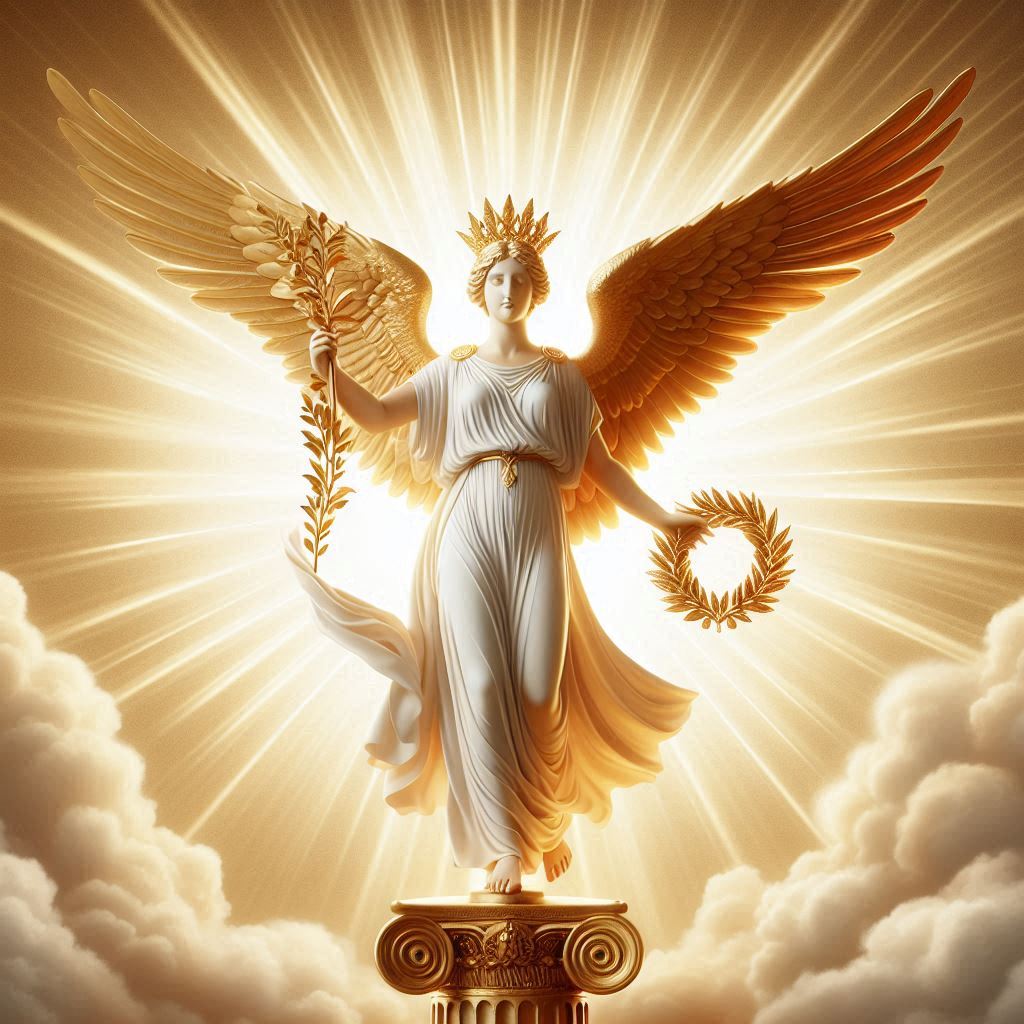Table of Contents
- The Origins of Nike
- Nike’s Role Among the Gods
- Nike’s Iconography and Symbolism
- Nike in Ancient Greek Society
- Nike’s Modern Legacy
- Conclusion: The Everlasting Wings of Nike
The Origins of Nike
Goddess Nike was born to Pallas (a Titan) and Styx (the goddess of the river Styx), making her a divine figure rooted in the older generation of deities. Her siblings—Kratos (strength), Bia (force), and Zelus (zeal)—all represented different aspects of the power needed to achieve victory, creating a powerful family devoted to success.
Nike, however, was special. Her name itself means “victory,” and she wasn’t just a goddess of war. Her domain included athletic competitions and contests of skill. Wherever there was the potential for triumph—whether on the battlefield or in the stadium—Nike was present, offering her favor to those worthy of victory.

Nike’s Role Among the Gods
While Nike was a lesser-known goddess compared to the Olympians like Zeus and Athena, she had a unique and respected place in the divine hierarchy. She was often depicted alongside Zeus, the king of the gods, as his loyal charioteer, delivering victory in times of war. Her role was to ensure the gods’ success in their cosmic struggles, whether it was against the Titans or the Giants.
One of Nike’s closest relationships was with Athena, the goddess of wisdom and strategic warfare. In fact, Nike was often represented as an aspect or companion of Athena, especially in Athens, where the Temple of Athena Nike was erected. This partnership between wisdom and victory speaks to the Greeks' belief that true triumph came not just from brute force, but from a combination of intellect, skill, and strength.
Nike’s Iconography and Symbolism
The image of Nike is one of the most recognizable in ancient art. She is typically portrayed as a winged goddess, symbolizing the swiftness of victory. Often seen holding a laurel wreath or a palm branch—both symbols of success—Nike represents the fleeting nature of triumph, as victory must be grasped before it vanishes. Her wings also suggest that victory comes swiftly to those who are deserving but can leave just as quickly.
One of the most famous depictions of Nike is the Winged Victory of Samothrace, a marble statue housed in the Louvre Museum in Paris. This masterpiece, crafted around the 2nd century BCE, portrays Nike in motion, her wings spread wide as though she has just descended from the heavens. Her flowing garments and dynamic posture capture the energy and movement associated with her role as the bringer of victory. Even in ancient times, this sculpture was considered a symbol of triumph and the divine favor that victory bestowed.

Nike in Ancient Greek Society
Nike held great importance in the public and religious life of ancient Greece. In the world of athletic competition, she was seen as the deity who crowned the victors, particularly in events like the Olympic Games, which celebrated physical excellence. Competitors would often pray to Nike for success, believing that her favor could mean the difference between glory and defeat.
In war, Nike’s influence was equally potent. Greek armies would invoke her blessings before battle, believing that her presence would guarantee their success. Statues of Nike were often placed on monuments celebrating military victories, symbolizing the favor of the gods in their triumphs.
Nike’s Modern Legacy
Though her mythological stories are fewer than those of other gods and goddesses, Nike's legacy has persisted through the centuries. In modern times, Nike remains an enduring symbol of victory and success. Most notably, the global sports brand Nike took its name and logo from the goddess, with the famous "swoosh" symbol representing her wing. The choice of Nike as the name for an athletic brand speaks to the association between the goddess and human achievement, particularly in sports and physical competition.
Beyond commercial uses, the spirit of Nike has been invoked in many arenas, from military honors to artistic representations. She stands as a timeless symbol of the pursuit of victory, whether in battle, in competition, or in personal endeavors.

Conclusion: The Everlasting Wings of Nike
Goddess Nike’s influence goes beyond ancient mythology. She is more than a goddess of war or athletics—she is the embodiment of victory itself, the very essence of triumph. Her wings represent the swiftness with which success can be achieved, but also the fleeting nature of that success. To win is to be favored by Nike, but it requires strength, skill, and strategy—qualities that transcend time and continue to inspire us today.
Nike’s legacy continues to soar through art, culture, and even in modern sports, reminding us that the pursuit of victory is eternal and ever relevant. Whether in ancient temples or modern arenas, Nike’s wings are a testament to human ambition and the desire to achieve greatness.
Interested in Greek mythology and history? Click here

